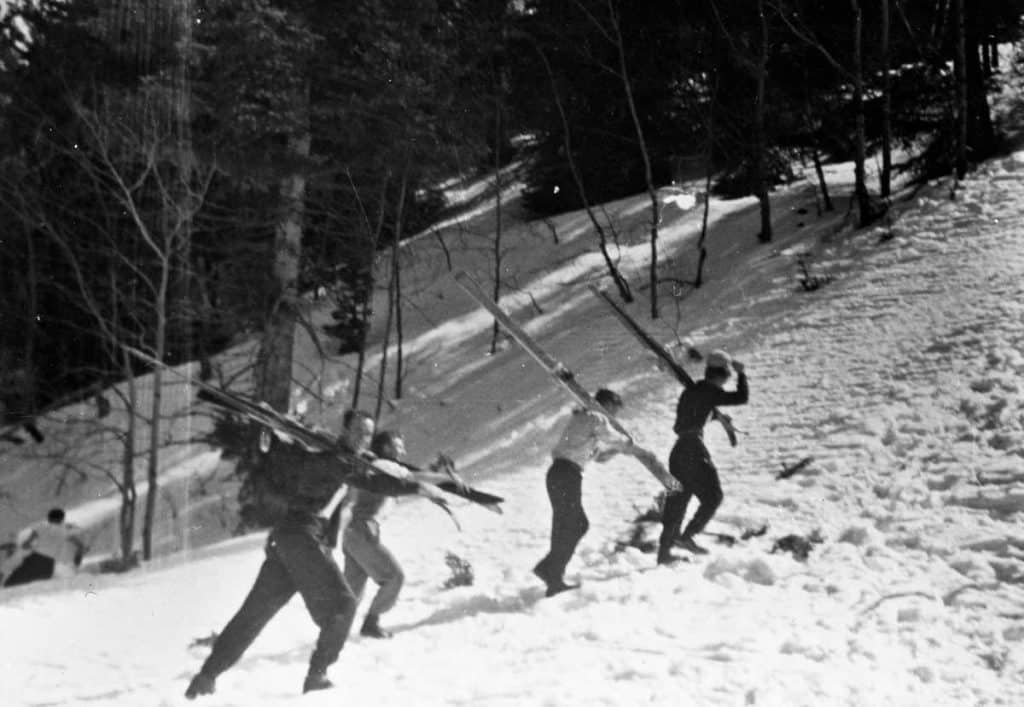The following is the third article in a series on Park City and Ketchum, Idaho.
The last installment in this series concluded with the onset of The Great Depression and its consequences for the Union Pacific Railroad Company (UP). This discussion focuses on the inception of the Sun Valley Resort and its future implications for Park City.
The numbers revealed a stark reality: the Depression was eroding one of the UP’s most important revenue streams – passenger traffic. Extraordinary circumstances required an innovative response. Cost cutting was not the answer. Rather, UP needed to give people (preferably wealthy ones) a reason to ride their trains.
Besides being UP’s CEO and Chairman of the Board, Averell Harriman and his younger brother (Edward) owned the country’s largest private banking firms: Brown Brothers Harriman, headquartered at 140 Broadway, NYC. In 1930 Averell befriended one of the firm’s employees, Count Felix von Schaffgotsch (Felix).
A descendant of Austrian royalty, the 26-year-old Count was flamboyant, wealthy and engaging. He regaled Averrell with stories regarding European destination ski resorts catering to the ultra-wealthy. Luxury trains provided the transportation. Considering the clientele, it was a near depression-proof business. Felix, an accomplished skier in the European style, scoffed at North America’s primitive ski resorts. Preparing to return home in 1931, his internship complete, Felix encouraged Averell to create the “St. Moritz” of North America. His parting advice: build it and they will come.
Four years later, that advice combined with the relentless deterioration of UP’s passenger business prompted Averell to hire Felix to discover the “perfect” location for the continent’s first luxury ski resort. In November 1935 the Count disembarked in New York City for his second stint working for Averell. Meeting at the bank, they discussed the selection criteria for a ski resort: easy access to a UP main line, mountains, snow, sun, a dry climate, and a remoteness that ensured patrons rode UP’s elite passenger trains.

Credit: Park City Historical Society & Museum, John Spendlove Collection
Thus Count Felix began a grueling six-week 7,000-mile sojourn riding UP trains in search of skiing’s Shangri-La. Two of those stops included Salt Lake City and Park City. Famed ski jumper Alf Engen introduced Felix to Alta and Brighton. Mel Fletcher did the honors in Park City. No question, both areas had potential – proximity to a UP main line, mountains, snow, and sun. The negatives for them then were that the locations were day trip accessible (from Salt Lake City) and, for Park City specifically, the blight of operating mines (that impediment would resolve itself decades later, albeit painfully so).
Based upon his exhaustive field work, the Count deemed Ketchum the best location to create a skier’s nirvana. Averell concurred and the rest is history. The full economic and engineering resources of the UP were committed to the project. Averell needed to rejuvenate his ailing passenger business – and the sooner the better.
Sun Valley opened on December 21,1936. The resort was an instant success, attracting the country’s elite in droves. And they rode UP’s premium streamliners. Over twenty years later, in desperation, Park City would embark on a similar strategy.
Stay tuned for part four of the article series. David Nicholas and Stuart Stanek are also giving a lecture on the similarities between Park City and Ketchum on April 3 from 5 to 6 p.m. at the Museum’s Education and Collections Center located at 2079 Sidewinder Drive.